Complete Solutions to Integer answer of chapter FRICTION AND CIRCULAR MOTION of Class 11 book with complete answers and questions
| Class 11 | PHYSICS |
| Chapter | FRICTION AND CIRCULAR MOTION |
| GRB PUBLICATION | Integer answer |
| Number Of Questions | 20 |
| Academic Year | 2023-24 |
Two blocks `A` and `B` of mass `2 kg` and `4 kg` are placed one over the others as shown in figure. A time vaying horizontal force `F=2t` is applied on the upper blocks as shown in figure. Here `t` is in second and `F` is in newton. Coefficient of friction between `A` and `B` is `mu=(1)/(2)` and the horizontal surface over which `B` is placed is smmoth. `(g=10 m//s^(2))`. If acceleration of blocks `A` as a function of time is given by `a_(A)=t//c` then find value of `c`. `(t le7.5s)`
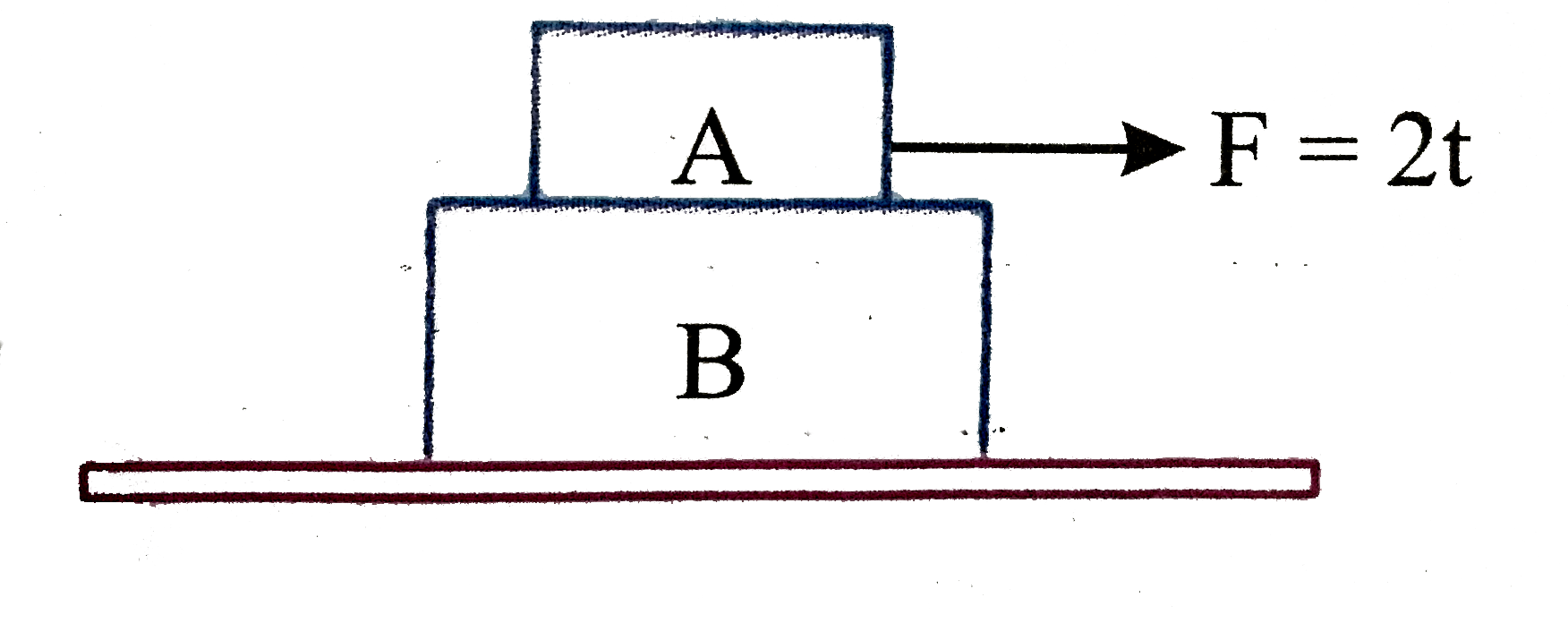 03:52View Solution
03:52View SolutionCalculate `F` such that frictional force acting on all blocks zero.
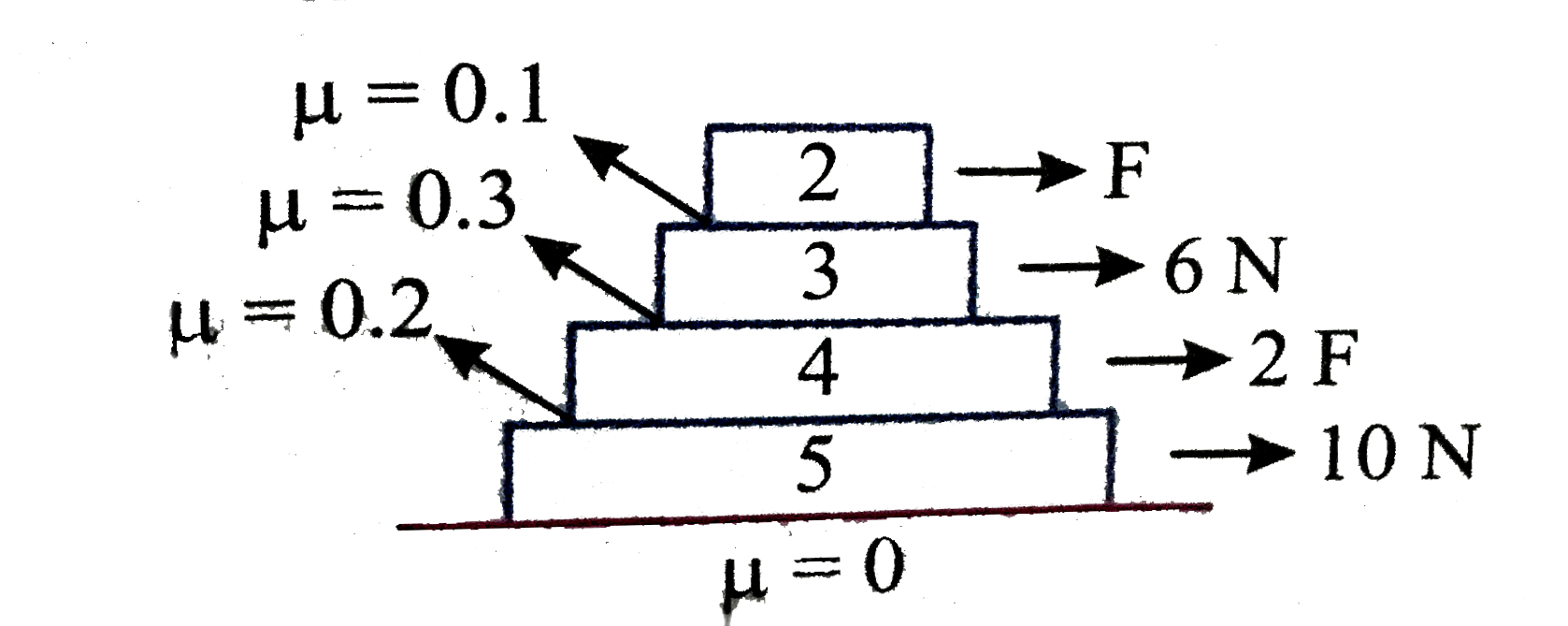 02:18View Solution
02:18View SolutionTwo small block `m=2kg` each kept on wedge of mass `12 kg`. There is no friction between blocks and wedge coefficient of friction between wedge and ground in `mu=0.3`. Calculate frictional force by ground on wedge.
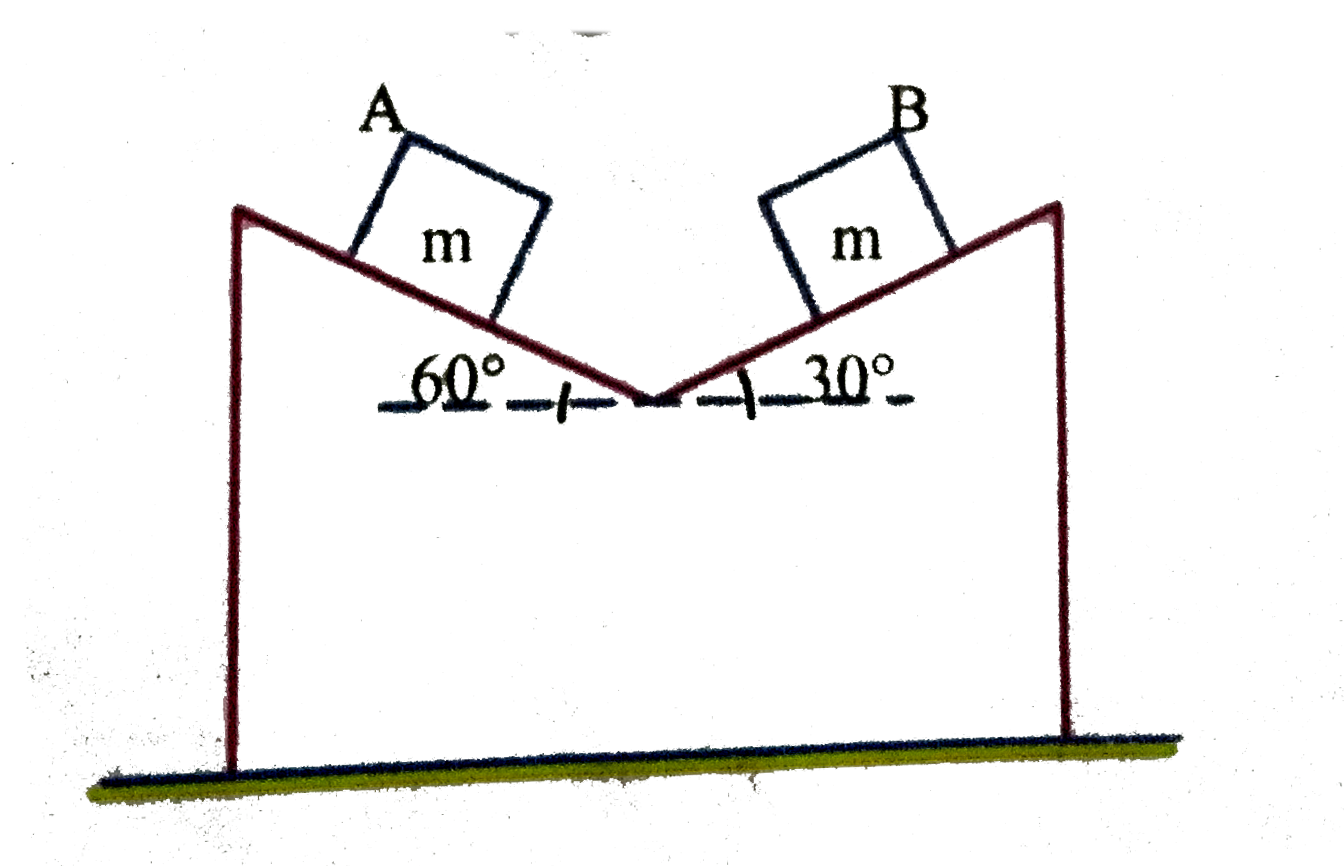 03:03View Solution
03:03View SolutionA `20 kg` block is originally at rest on a horizontal surface for which the coefficient of friction is `0.6`. A horizontal force `F` is applied such that it varies with time as shown in the figure (a) & (b). If the speed of the block after `10 s` is `8v` then find `v`. ( Take `g=10m//s^(2)`)
 08:07View Solution
08:07View SolutionBlock `B` is placed on a smooth surface. Block `A` is placed on rough surface of bolck `B` with coefficient of friction `0.60`. The mass of `A` and `B` are `2 kg` and `4 kg` respectively. Find the frictional force between `A` and `B` ( in `N`)
 02:18View Solution
02:18View Solution`mu` is coefficient of friction between all surfaces . Block A is kept over block B on inclined plane . The minimum force required such that 'A' block can accelerate along applied force is mg sin `theta + n mu g "cos" theta ` , calculate n .
 01:22View Solution
01:22View SolutionA toy car of mass `m` can travel at a fixed speed. It moves in circle on a fixed horizantal table. A string is connected to the car and attached to a block os mass `M` that hangs as shown in figure (the portion of string below the table is always vertical). The coefficient of friction between the surface of table and tyres of the toy car is `mu`. Find the ratio of the maximum radius to the minimum radius for which the toy car can move in a circular path with center `O` on table. `(Given M = 3kg,m=2kg,mu=1/2)`
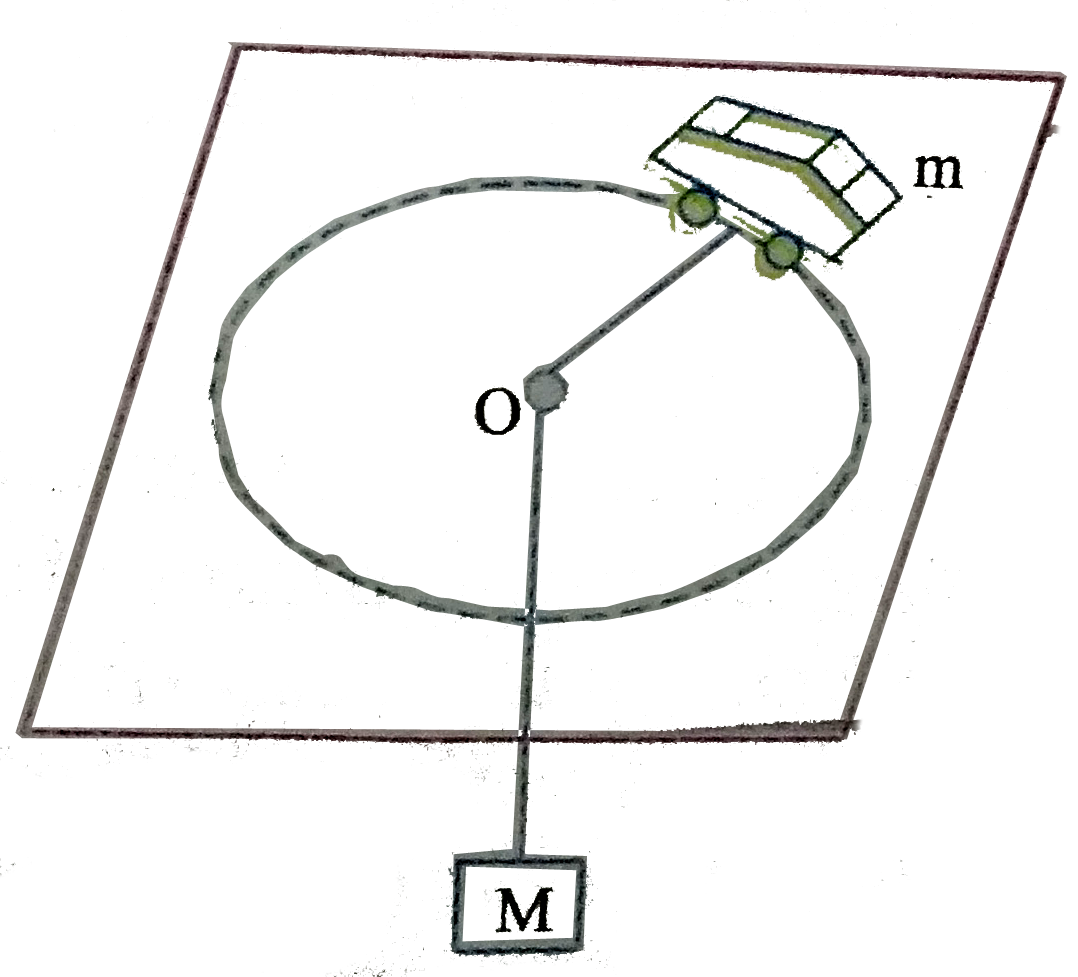 05:18View Solution
05:18View SolutionA large mass M and a small mass m hang at two ends of a string that passes over a smooth tube as shown in the figure. The mass m moves around a circular path which lies in a horizontal plane. The length of string from the mass m to the top of the tube is l and `theta` is the 'angle' this length makes with the vertical. What should be the frequency of rotation of mass m, so that the mass M remains stationary?
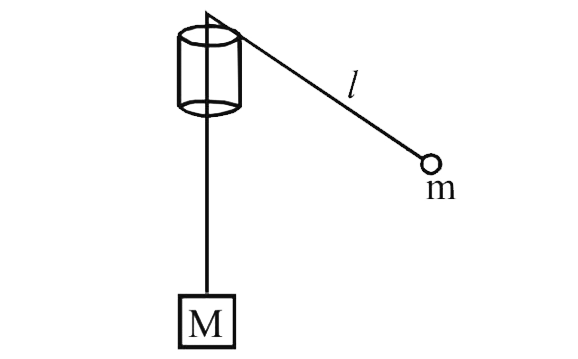 04:39View Solution
04:39View SolutionA closed chain `A` of mass `m` = 0.36kg is attached to a vertical rotating shaft by means of thread showin in fig. and rotated with a constant angular velocity `omega=35rad//s`. The thread forms an angle `theta=45^(@)` with the vertical. Then the tension of the thread is
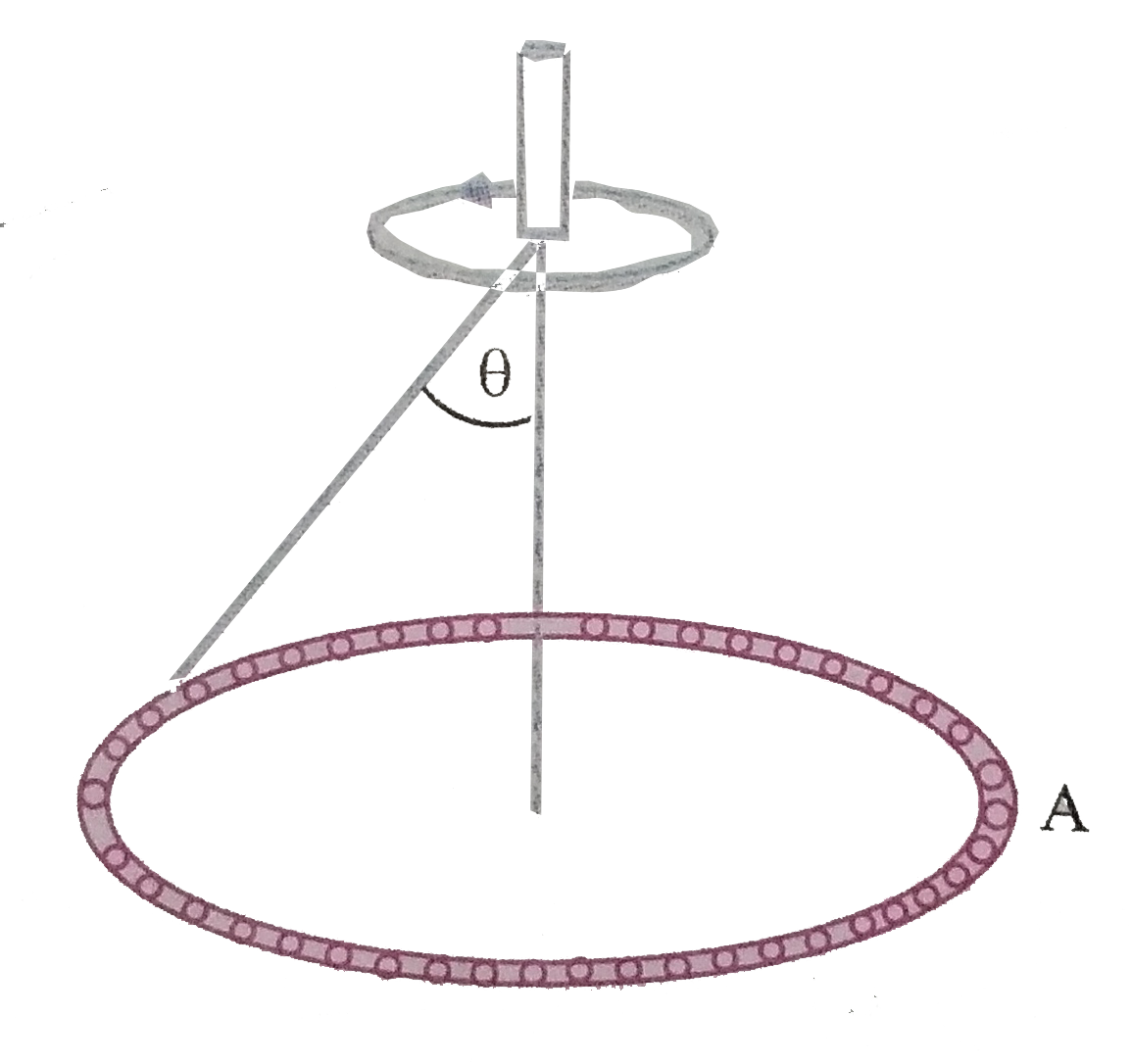 02:34View Solution
02:34View SolutionA table with smooth horizontal surface is placed in a cabin which moves in a circle of a large radius R = 100 m with `omega` = 3 rad/s (see figure ) . A smooth pulley of small radius is fastened to the table . Two masses m and 2m placed on the table are connected through a string going over the pulley . initially the masses are held by a person with the strings along the outward radius and then the system is released from rest (with respect to the cabin ) . Then the magnitude of the initial acceleration of the mass m as seen from the cabins is `n xx 100 `. Find n .
 View Solution
View SolutionA solid body starts rotating about a stationary axis with an angular acceleration `alpha=(2.0xx10^(-2))trad//s^(2)` here `t` is in seconds. How soon after the beginning of rotation will the total acceleration vector of an arbitrary point of the body form an angle `theta=60^(@)` with its velocity vector?
04:07View SolutionA 20 kg block is originally at rest on a horizontal surface for which the coefficient of friction is `0.6` . A horizontal force F is applied such that it varies with time as shown in the figure (a) and (b) . If the speed of the block after 10 s is 8 v then find v . (Take g = `10 m// s^(2)`)
 View Solution
View SolutionBlock A and B are connected by a rod of negligible mass as shown in Fig . 7.199 . The mass of each block is `170` kg . The coefficient of friction between inclined plane and blocks A and B are 0.2 and 0.4 respectively . The tension in the rod is found to be 50 x newtons, the value of x is :
 View Solution
View SolutionA `6 kg` blocks is kept over a rough surface with coefficients of friction `mu_(s)=0.6` and `mu_(k)=0.4` as shown in figure. A time varying force `F=4t` ( `F` in newton and `t` in second) is applied on the block as shown. Find the acceleration of block at `t=5 sec`. ( Taking `g=10 m//s^(2)`)
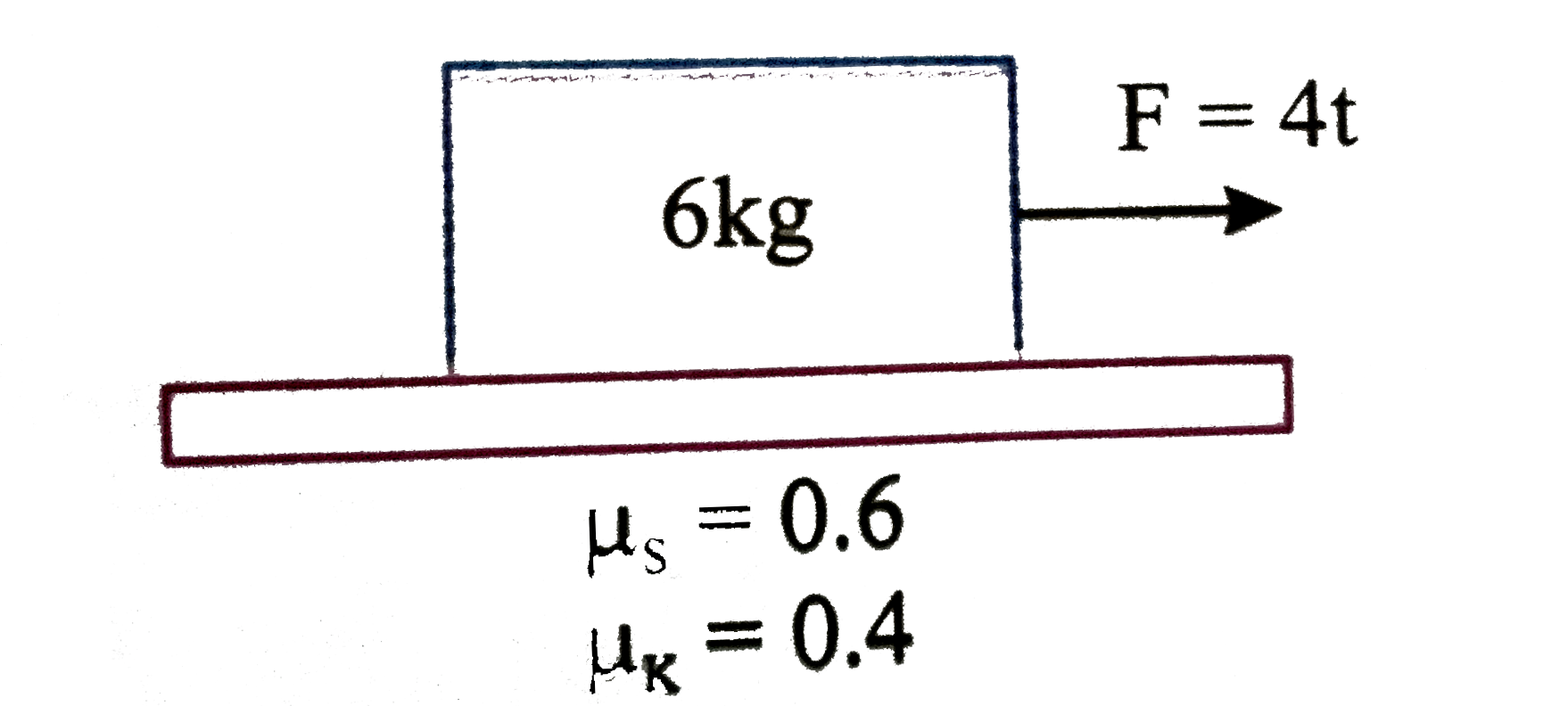 01:30View Solution
01:30View SolutionTwo blocks `A` and `B` of mass `2 kg` and `4 kg` are placed one over the others as shown in figure. A time vaying horizontal force `F=2t` is applied on the upper blocks as shown in figure. Here `t` is in second and `F` is in newton. Coefficient of friction between `A` and `B` is `mu=(1)/(2)` and the horizontal surface over which `B` is placed is smmoth. `(g=10 m//s^(2))`. If acceleration of blocks `A` as a function of time is given by `a_(A)=t//c` then find value of `c`. `(t le7.5s)`
 03:52View Solution
03:52View SolutionTwo blocks of masses `M_(1)` and `M_(2)` connected by a light spring rest on a horizontal plane . The coefficient of friction between the blocks and the surface is equal to `mu` . The minimum constant force that has to be applied in the horizontal direction to the block of mass `M_(1)` in order to shift the other block is `(M_(1) + (M_(2))/(alpha)) mu g` , then `alpha` is :
View SolutionTwo blocks A and B of mass 2 kg and 4 kg are placed one over the other as shown in Fig. (a) . A time varying horizontal force F = 2t is applied on the upper block . Here t is in second and F is in newton . A graph drawn between accelerations of A and B on y-axis and time on x-axis is shown in Fig. (b) . Then tan `theta = (1)/(K)` , K = .....
 View Solution
View SolutionA block A of mass 2 kg rests on another block B of mass 8 kg which rests on a horizontal floor . The coefficient of friction between A and B is `0.2` while that between B and floor is `0.5` . When horizontal force F = 25 N is applied on the block B , the force of friction between A and B is (in N) .
View SolutionCoefficient of friction between two blocks shown in Fig. 7.203 is `mu = 0.4` . The blocks are given velocities of 2 m/s and 8 m/s in the directions shown in figure . The time when relative motion between them will stop is ( in sec) . :
 View Solution
View SolutionA block is moving on an inclined plane making an angle `45^(@)` with the horizontal and the coefficient of friction is `mu` . The force required to just push it up the inclined plane is 3 times the force required to just prevent it from sliding down . If we define `N = 10 mu` , then N is :
View Solution
Integer answer questions and complete solutions for chapter FRICTION AND CIRCULAR MOTION of GR BATHLA & SONS PHYSICS (HINGLISH) of Class 11
